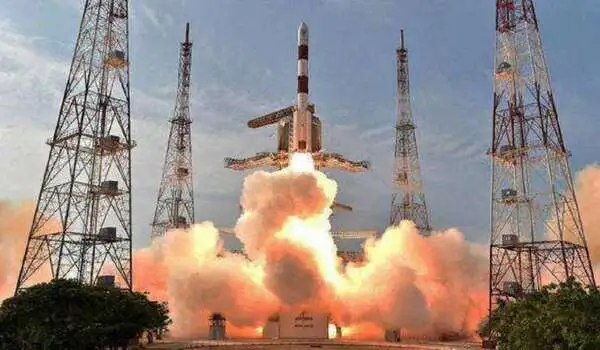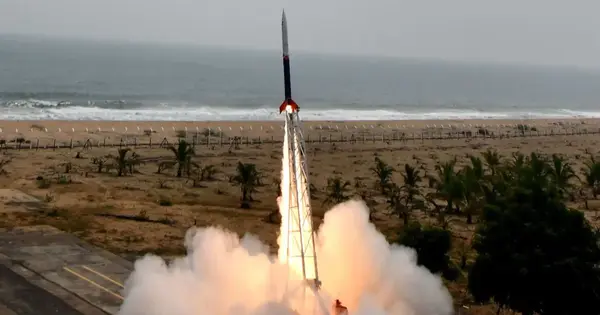Vikram-S, India’s first private rocket carrying three satellites, took off from the spaceport. Vikram-S, a 6-metre-tall launch vehicle named after Vikram Sarabhai, the country’s space program’s father, lifted off at 11.30 a.m. Skyroot Aerospace, a four-year-old company, created it. The first privately developed Indian rocket launched into the upper atmosphere, marking yet another milestone in the country’s push to become a major space power.
According to live footage from the Indian Space Research Organization (ISRO), the half-tonne Vikram-S rocket launched before midday local time and traveled in an arc. According to the agency, it safely splashed down into the sea six minutes later. The rocket, developed by the local startup Skyroot Aerospace, reached a maximum altitude of 90 kilometers (55 miles), falling short of the internationally recognized 100-kilometer Karman line that separates Earth from outer space.
“It is indeed a new beginning, a new dawn… in the journey of India’s space program,” science minister Jitendra Singh said after the launch to a crowd of cheering technicians at the ISRO’s launch facility on the southern island of Sriharikota.
India has been bolstering its space program in recent years, including a crewed mission with Russian backing slated for 2023 or 2024. Its capabilities and ambitions have grown, highlighted by the success of its rockets and missions beyond Earth.
The single-stage, a solid-fuel rocket was built with “carbon composite structures and 3D-printed components”, the government said Thursday ahead of the first Vikram-S mission, named “Prarambh” (“Start”).
India has been bolstering its space program in recent years, including a crewed mission with Russian backing slated for 2023 or 2024. Its capabilities and ambitions have grown, highlighted by the success of its rockets and missions beyond Earth.
In 2014, India became the first Asian nation to reach Mars with its Mangalyaan orbiter. Hailed for its low cost, that mission put India in a small club including the United States, Russia, and the European Union. And in 2019, Prime Minister Narendra Modi hailed India as a “space superpower” after it shot down a low-orbiting satellite, a move prompting criticism for the amount of “space junk” it created.

India is also working to boost its two percent share of the global commercial space market. In October, ISRO’s heaviest rocket yet successfully put 36 broadband satellites in low earth orbit. Experts say India can keep costs low by copying and adapting existing space technology, and thanks to an abundance of highly skilled engineers who earn a fraction of their foreign counterparts’ wages.
Vikram founded the Indian National Committee for Space Research in 1962, which was renamed the Indian Space Research Organization later that year (ISRO). In addition, he established the Thumba Equatorial Rocket Launching Station in southern India. Sarabhai was appointed chairman of the Atomic Energy Commission of India following the death of physicist Homi Bhabha in 1966.
Sarabhai was largely responsible for the establishment and development of India’s nuclear power plants, carrying on Bhabha’s work in the field of nuclear research. According to Encyclopedia Britannica, he laid the groundwork for the indigenous development of nuclear technology for defense purposes.
















